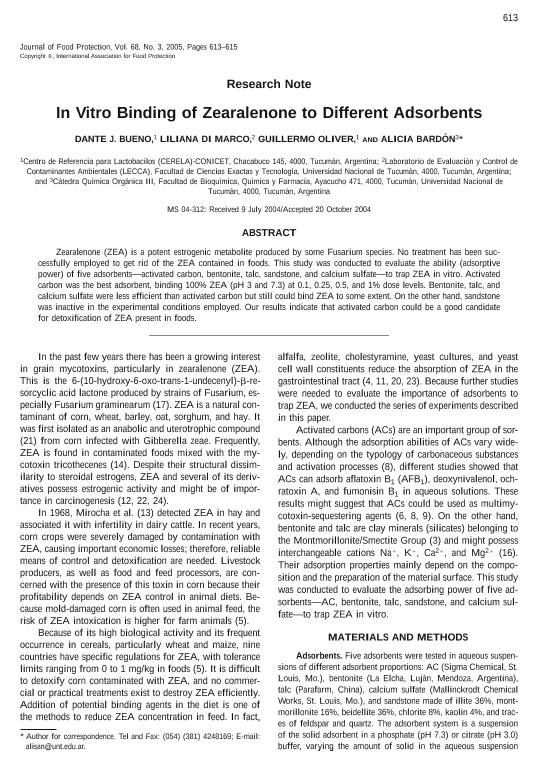Artículo
In vitro binding of Zearalenone to different adsorbents
Fecha de publicación:
03/2005
Editorial:
International Association for Food Protection
Revista:
Journal of Food Protection
ISSN:
0362-028X
e-ISSN:
1944-9097
Idioma:
Inglés
Tipo de recurso:
Artículo publicado
Clasificación temática:
Resumen
Zearalenone (ZEA) is a potent estrogenic metabolite produced by some Fusarium species. No treatment has been successfully employed to get rid of the ZEA contained in foods. This study was conducted to evaluate the ability (adsorptive power) of five adsorbents - activated carbon, bentonite, talc, sandstone, and calcium sulfate - to trap ZEA in vitro. Activated carbon was the best adsorbent, binding 100% ZEA (pH 3 and 7.3) at 0.1, 0.25, 0.5, and 1% dose levels. Bentonite, talc, and calcium sulfate were less efficient than activated carbon but still could bind ZEA to some extent. On the other hand, sandstone was inactive in the experimental conditions employed. Our results indicate that activated carbon could be a good candidate for detoxification of ZEA present in foods.
Palabras clave:
Zearalenone
,
Adsorbent
,
Binding
Archivos asociados
Licencia
Identificadores
Colecciones
Articulos(CERELA)
Articulos de CENTRO DE REFERENCIA PARA LACTOBACILOS (I)
Articulos de CENTRO DE REFERENCIA PARA LACTOBACILOS (I)
Citación
Bueno, Dante Javier; Di Marco, Liliana; Oliver, Guillermo; Bardon, Alicia del Valle; In vitro binding of Zearalenone to different adsorbents; International Association for Food Protection; Journal of Food Protection; 68; 3; 3-2005; 613-615
Compartir
Altmétricas




